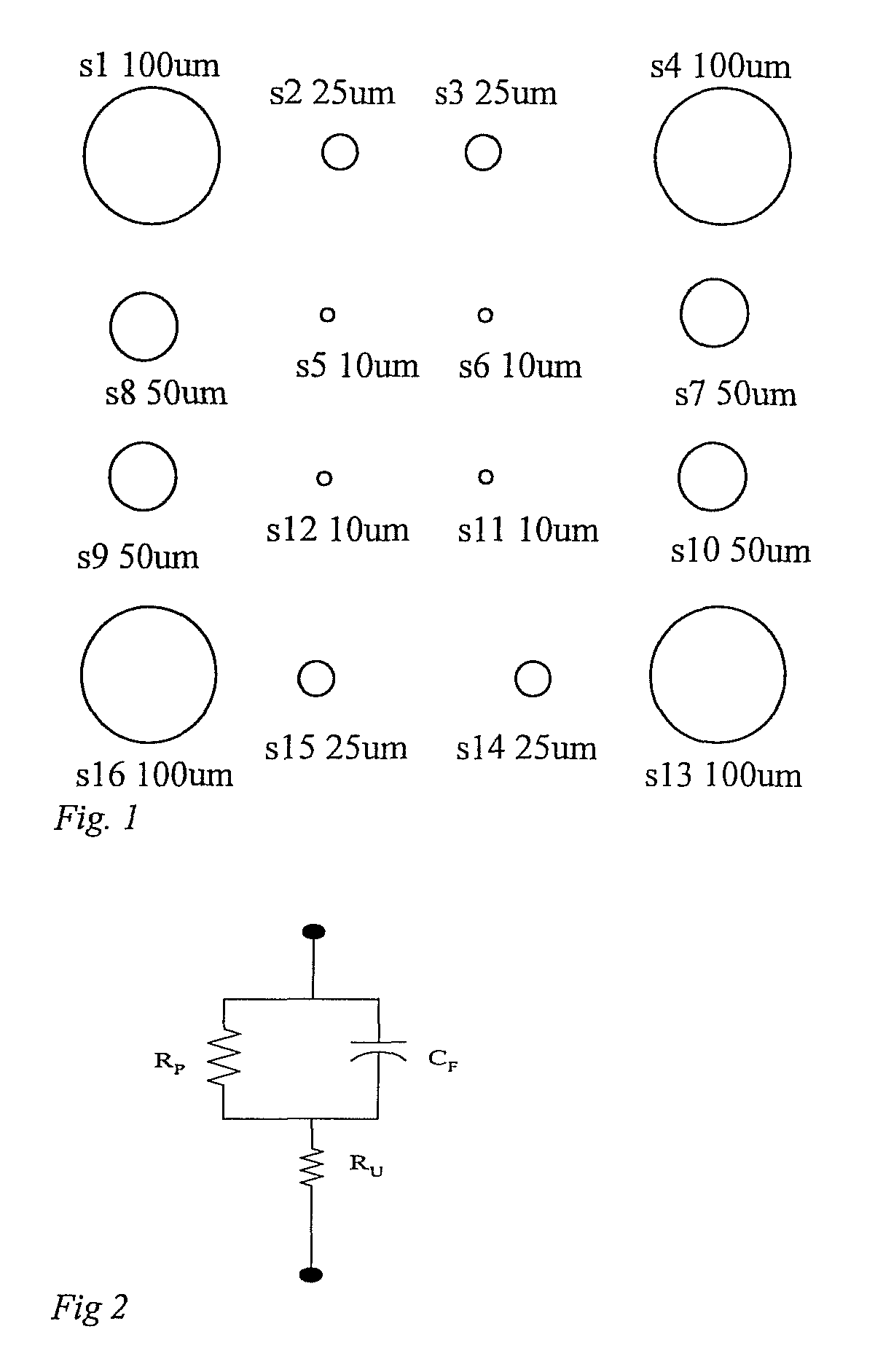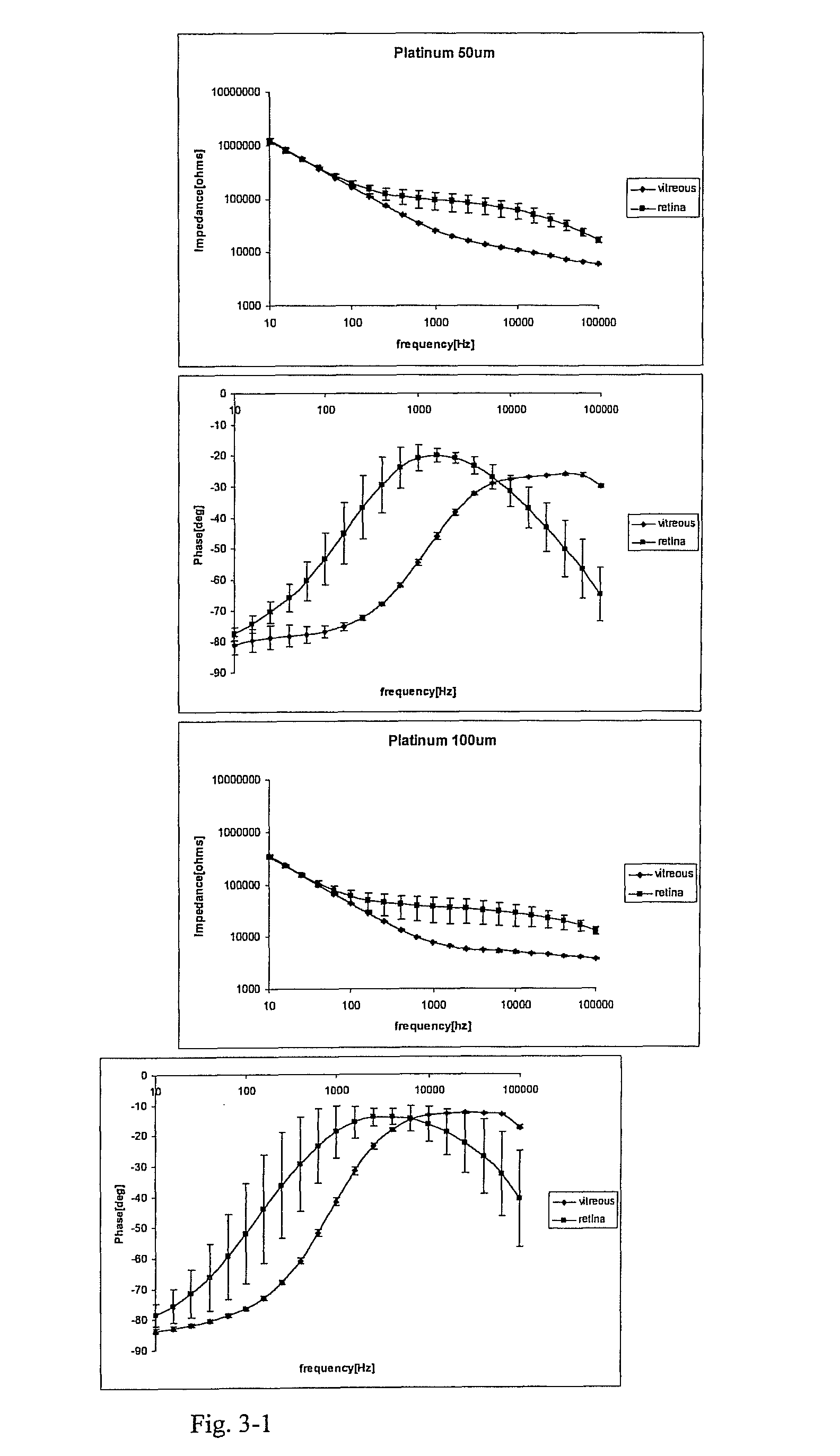Method of improving electrode tissue interface
a tissue interface and electrode technology, applied in the direction of head electrodes, internal electrodes, therapy, etc., can solve the problems of large prosthetic devices, bulky, and insufficient simulated vision to truly aid the visually impaired, and achieve the effect of significantly greater tissue resistance of the retina
- Summary
- Abstract
- Description
- Claims
- Application Information
AI Technical Summary
Benefits of technology
Problems solved by technology
Method used
Image
Examples
Embodiment Construction
[0023]Retinal prostheses are implantable electronic devices designed to electrically stimulate retinal neurons when the photoreceptors of the retina are absent, due to photoreceptor degenerative disease. Age-related macular degeneration and retinitis pigmentosa are two such diseases that blind millions worldwide. Several clinical trials of prototype retinal prostheses are currently on-going. All have shown the ability to evoke phosphenes (spots of light) in subjects otherwise blind. The systems are similar in their implementation. They use an external camera to capture light information, an external processor to code the image information and then wirelessly transmit stimulus commands to implants. The implants have custom circuits which decode the stimulus command signal and output electrical charge via a controlled current or voltage signal. The prototype devices all use electrical stimulation of retinal cells with extracellular electrodes as the means of creating a sensation of li...
PUM
 Login to View More
Login to View More Abstract
Description
Claims
Application Information
 Login to View More
Login to View More - R&D
- Intellectual Property
- Life Sciences
- Materials
- Tech Scout
- Unparalleled Data Quality
- Higher Quality Content
- 60% Fewer Hallucinations
Browse by: Latest US Patents, China's latest patents, Technical Efficacy Thesaurus, Application Domain, Technology Topic, Popular Technical Reports.
© 2025 PatSnap. All rights reserved.Legal|Privacy policy|Modern Slavery Act Transparency Statement|Sitemap|About US| Contact US: help@patsnap.com



